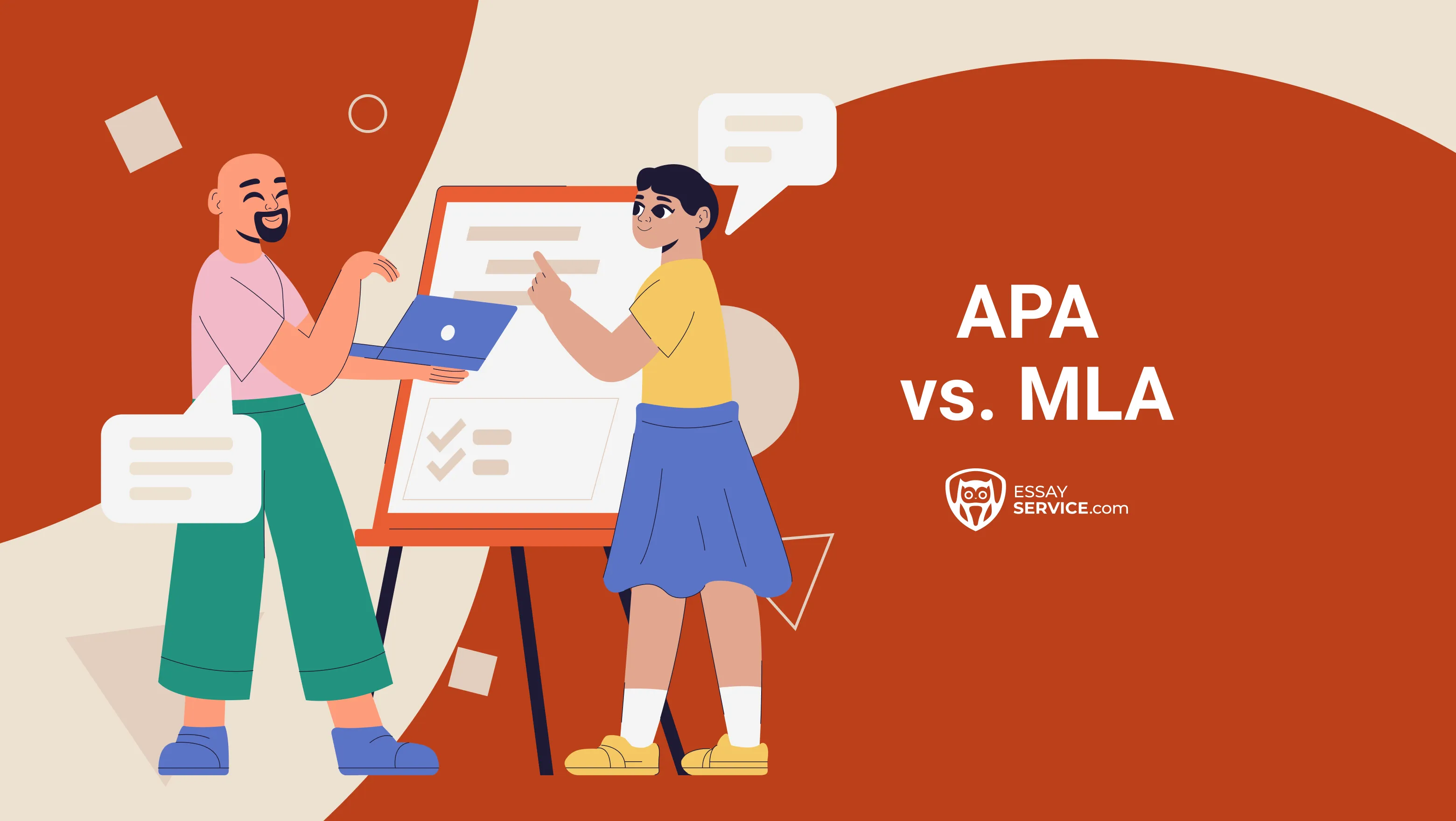APA and MLA are the most common academic citation styles. APA style is mostly used in the behavioral and social sciences. MLA style fits subjects like languages and the arts. The difference between APA and MLA is mainly what each format focuses on. APA format emphasizes publication years, while MLA highlights page numbers for easier reference.
If you'd rather spend your time doing the real writing and want to leave the formatting headaches to someone else, remember that EssayService’s professional team is always available.

When to Use MLA or APA?
Each style is suitable for different types of academic writing. MLA style is best for essays that:
- Interpret texts
- Critique stories
- Explore cultural meaning
APA, on the other hand, is best for:
- Research driven by data
- Studies tracking timelines and sources
- Writing built on tested results
- Fields expecting structured evidence
Think about your subject's priorities when you're trying to decide between APA or MLA. Is it a story or a study? Expression or evidence? Sample papers in your field can always help you make a choice if you're still uncertain. Or, ask your instructor for the specifications.
APA and MLA: In-text Citations
In-text citations point readers to each source you reference in your writing. MLA and APA use different structures. But the purpose is unchanged: to give credit where it's due and to make your research traceable. Here's what each format includes:
MLA:
- Author's last name
- Page number in parentheses
- Example: (Reyes 45)
APA:
- Author's last name
- Publication year
- Page number only for direct quotes
- Example: (Reyes, 2024, p. 45)
APA vs. MLA Formatting
The guidelines for APA and MLA share several basics. Those are needed to keep academic papers clean and readable. These are some of the shared formatting rules:
- 12 pt Times New Roman font
- Double-spacing throughout the document
- 1-inch (2.54 cm) margins on all sides
- Indented paragraphs at the start of each section
What the formats handle differently are title pages, headers, and long quotations. But we'll talk about those distinctions in the later sections. For now, take a quick look at the main differences below:
Title Page and Header
The title page and header differ clearly between the two styles. An APA format essay requires a separate title page that lists key details, while MLA integrates them into the first page.
APA:
- Includes a separate title page before the essay.
- The paper title is centered, bolded, and written in title case.
- The author’s full name appears below the title, followed by the institution name.
- Lists:
- Course name and number (e.g., PSY 201: Introduction to Psychology)
- Instructor’s full name and title (e.g., Dr. Amanda Lewis)
- Date in Month Day, Year format (e.g., March 3, 2025)
- The header includes a running head (short title in all caps) on the left and the page number on the right.
- The entire page is double-spaced.
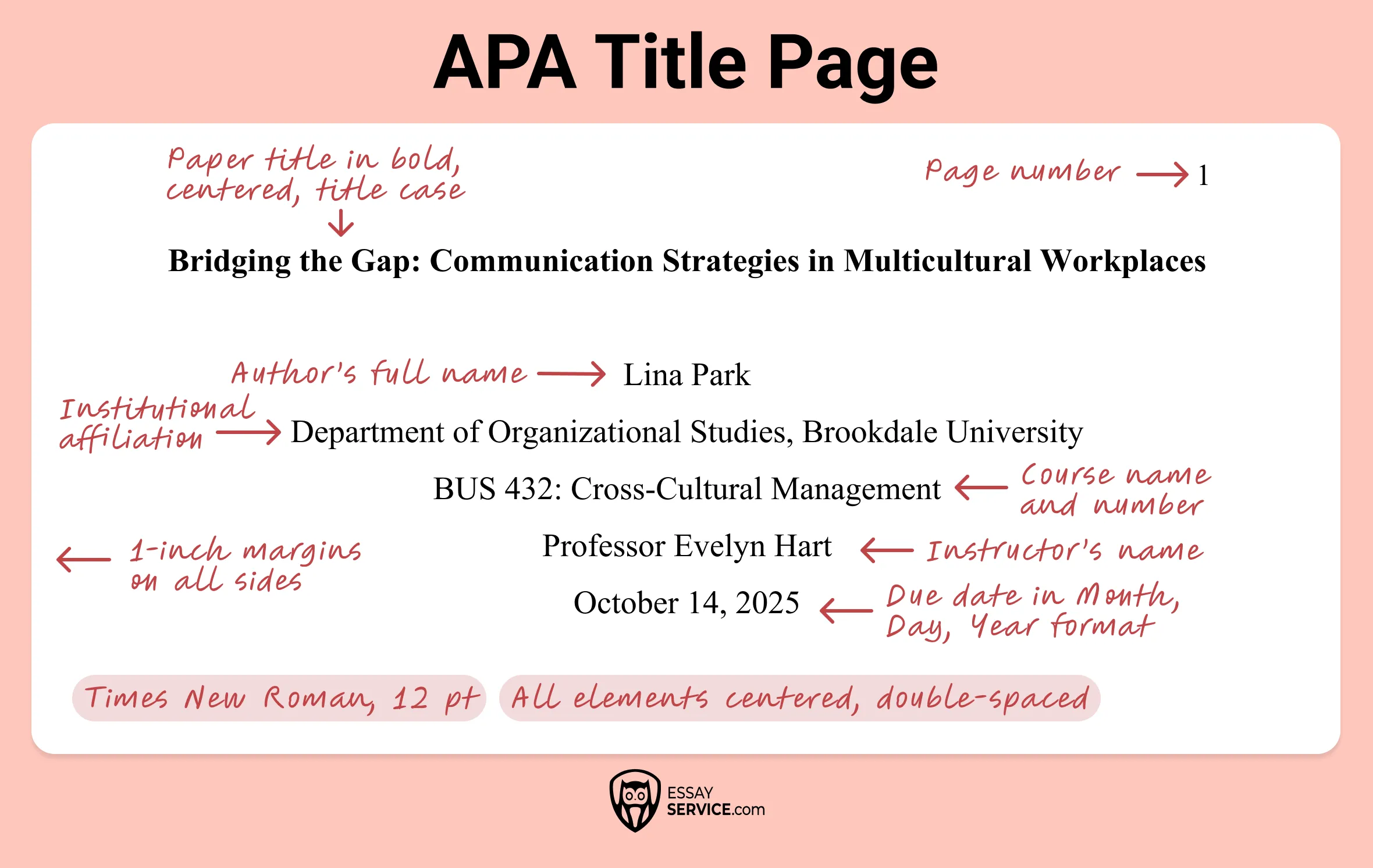
MLA:
- Does not use a separate title page. All details appear on the top left of the first page.
- The heading includes:
- Student’s full name
- Instructor’s name
- Full course title (e.g., English 101: Composition and Rhetoric)
- Date in Day Month Year format (e.g., 3 March 2025)
- The essay title is centered below the heading, in standard font (no bold or italics).
- The header contains the author’s last name and page number, right-aligned.
- Text remains double-spaced throughout.
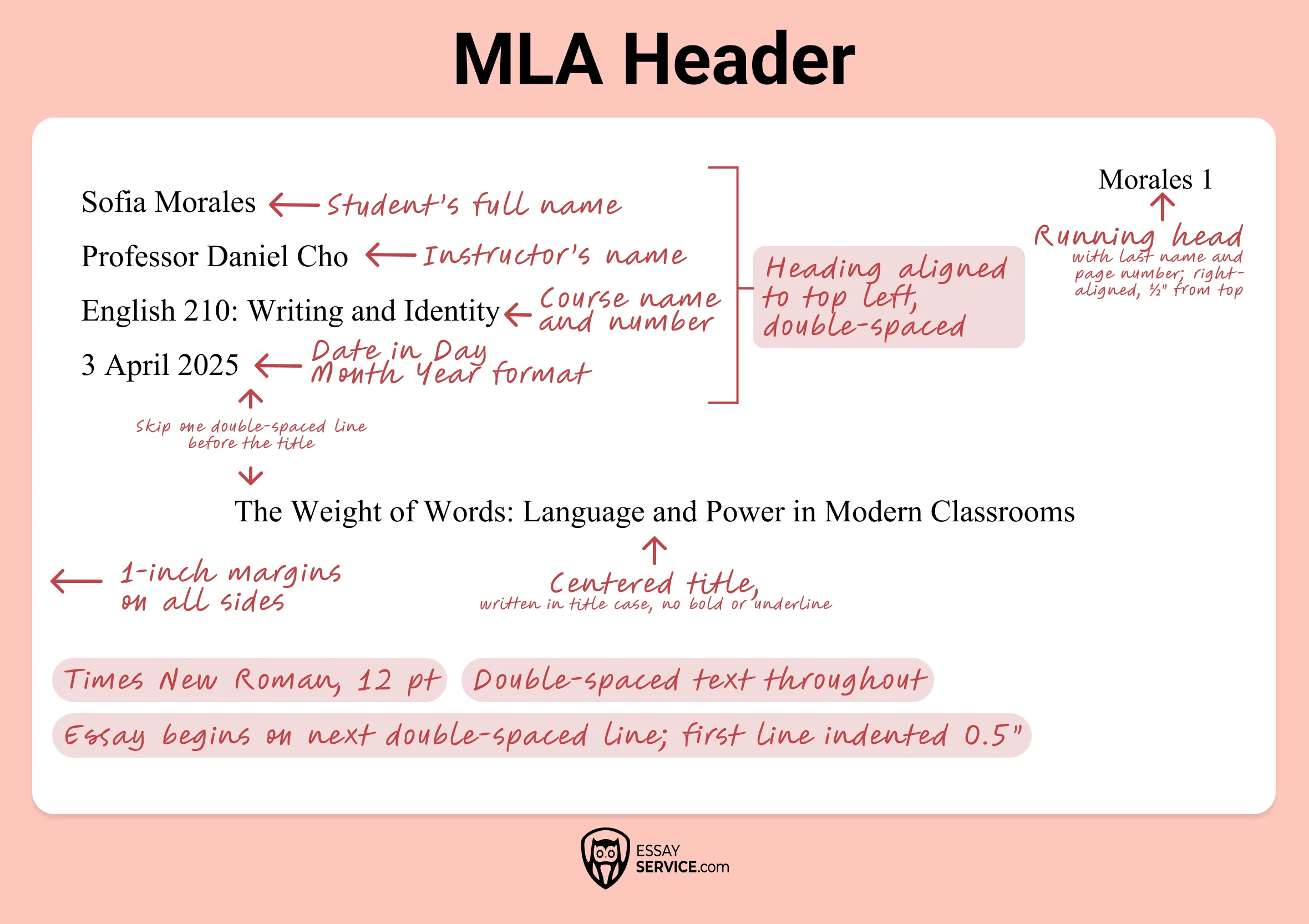
Running Head
A running head is a header element that identifies each page of a paper. In APA format, it appears on every page, including the title page. The running head includes a shortened version of the paper’s title written in all capital letters. It is placed at the top left of the header. The page number is positioned on the top right. This layout helps readers track pages easily in printed or digital documents.
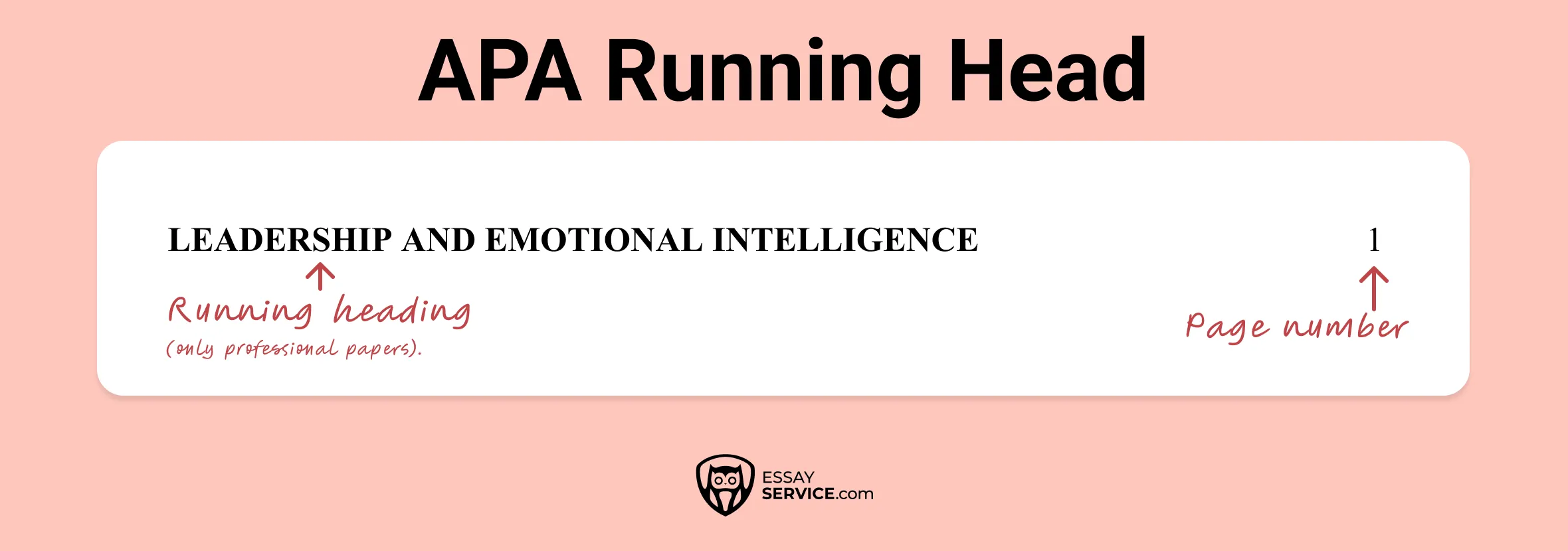
MLA format does not include a running head. Instead, it uses a standard header. The author’s last name appears first, followed by the page number. Both elements are right-aligned and repeated on every page. This format ensures proper page identification and maintains consistency throughout the document.
Block Quote Formatting
Block quotes set apart long excerpts so the reader can see they come directly from another source. They are written as their own section. Both APA and MLA styles call for double spacing and a visible indentation. The point at which a quote becomes a block, though, is not the same.
In APA, a passage is considered a block quote once it runs past 40 words. The text begins on a new line. It shifts half an inch inward from the left margin. Quotation marks are left out. The sentence keeps its normal punctuation, and the citation appears after the period.
MLA uses a similar visual break but sets a different length requirement. Any prose that stretches beyond four lines becomes a block. The excerpt starts on its own line and moves one full inch to the right. Quotation marks are not added. The final period comes first, and the citation follows it.
APA Reference List vs. MLA Works Cited List
Both APA and MLA style papers end with a detailed list of sources used. This section shows the research behind the writing, so the readers can find the same materials on their own. The purpose is identical in both styles, yet the structure and formatting rules differ.

In APA, this page is titled References. It begins on a new sheet after the main text. The heading is centered at the top and written in plain type. Every source appears in alphabetical order under the author’s last name. Each entry opens with the author, followed by the year of publication in parentheses. The title comes next. It uses a sentence case, where only the first word and proper nouns start with a capital letter. After that, the publisher's name appears. You add a DOI or URL when the source is available online. The page uses a hanging indent so the first line stays at the margin and the next lines shift half an inch inward.
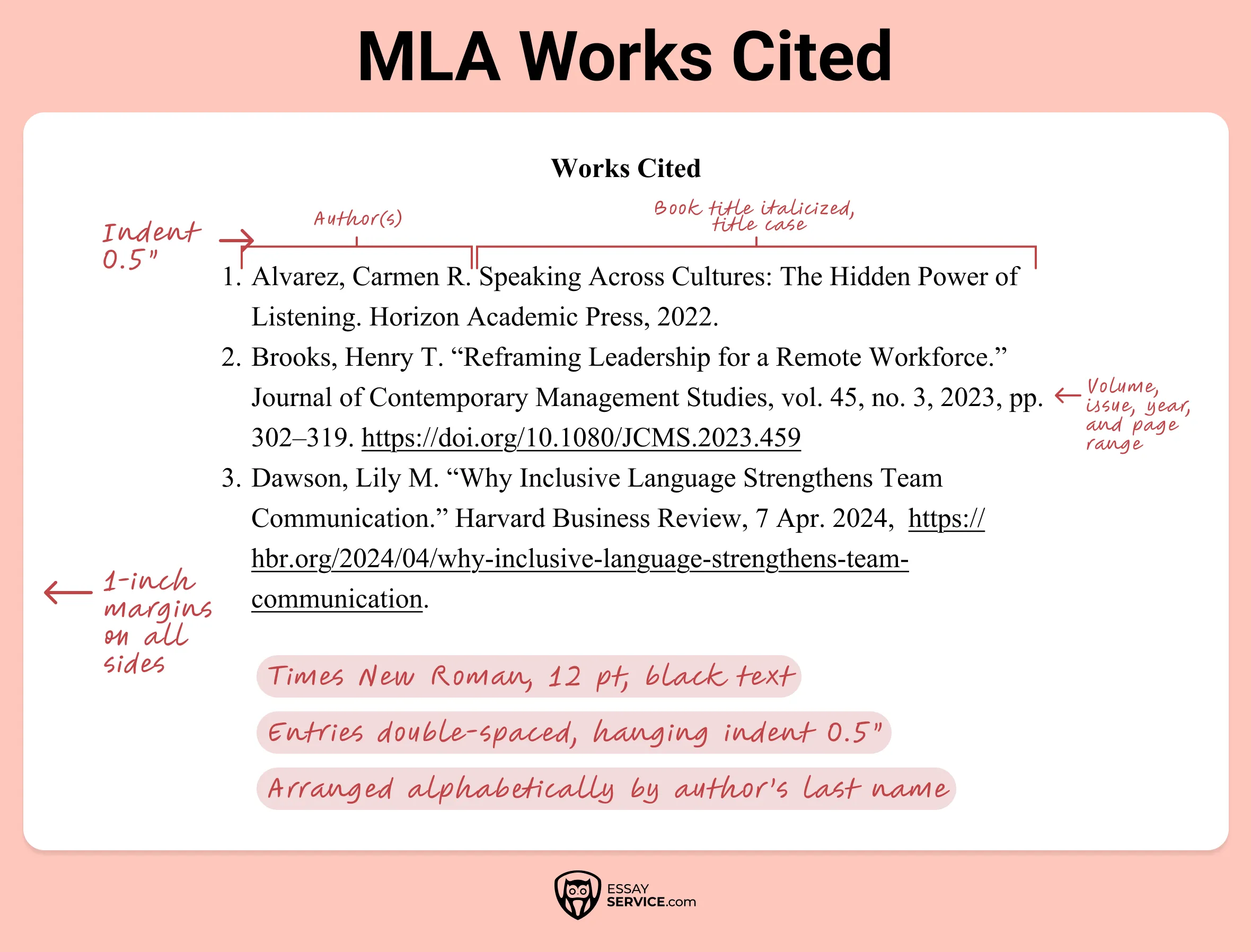
In MLA, the closing page is titled Works Cited. Entries follow the same alphabetical order but follow a different pattern. Each listing starts with the author, then the full title in title case. The publisher name and year appear after. A URL is included for digital sources. MLA also applies a half-inch hanging indent for all entries.
Wrapping It All Together
Formatting styles exist to make academic writing consistent. Learning their systems takes time, but precision here shapes how your work is received. A well-formatted paper shows that you've done your work with care and respect for every source that informed it.
If the process feels demanding, EssayService can help. With our APA paper writing service, every citation will look exactly as it should.
Frequently Asked Questions
What Is the Difference Between APA and MLA Style?
APA is about dates and structure, great for sciences. MLA loves page numbers and names, perfect for humanities. APA has a title page; MLA doesn’t. Think of APA as precise and MLA as creative.
Is MLA or APA Easier?
MLA is simpler for shorter papers — no title page, less focus on dates. APA feels trickier with its detailed structure but shines for research-heavy writing. Your field of study often decides which is "easier."
Does APA Provide More Information Than MLA?
Yes! APA dives deep with publication dates, DOIs, and structured details, making it ideal for research-heavy papers. MLA focuses more on the author and page number, keeping things streamlined for literature and humanities work.

Eugene has spent the past 15+ years editing and proofreading articles for academic journals, newspapers, and magazines. His attention to detail and experience power actionable advice on citations, tone of voice, and more.
- Atilano, M. (n.d.). LibGuides: Citation Styles: A Brief Guide to APA, MLA and Turabian: In Text Citations. https://libguides.unf.edu/citationguide/Intext
- American Psychological Association. (n.d.). MLA vs. APA reference comparison [PDF]. https://apastyle.apa.org/instructional-aids/mla-reference-comparison.pdf
- MLA and APA Side-by-Side. (n.d.). https://www.smsu.edu/resources/webspaces/campuslife/writingcenter/MLA%20APA%20Compare.pdf
New posts to your inbox
Your submission has been received!
